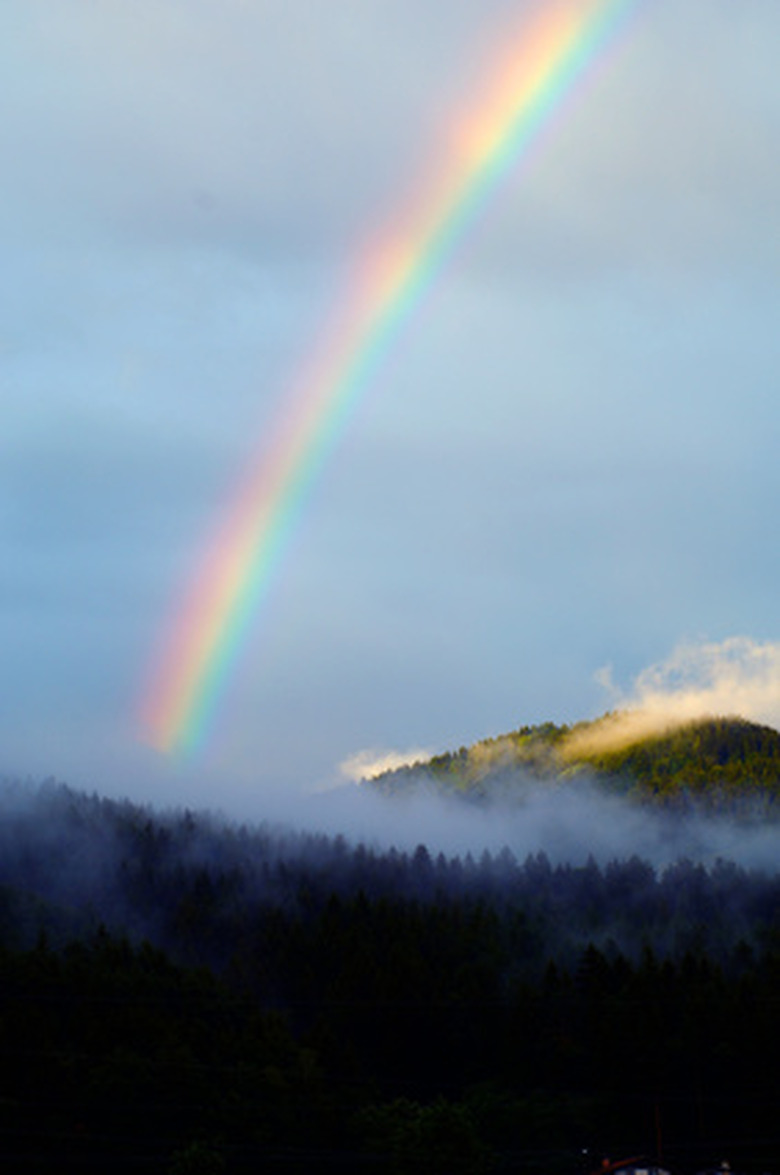Why Do Plants Grow Taller In Red Light?
Plants need four things to grow: soil nutrients, light, carbon dioxide and water. The latter three allow the plant to convert soil nutrients into glucose, sucrose and starch (carbohydrate sugars), which it uses for energy. This energy goes into building cells, which multiply and contribute to the size of the plant. The plant's green chlorophyll absorbs red light more readily than any other color in the spectrum, allowing it to contribute energy to help the plant grow taller and possibly healthier.
Chlorophyll
Leaves get their color from three basic compounds, the primary of which is chlorophyll. Chlorophyll is green in color, is responsible for photosynthesis, and breaks down quickly in the absence of sunlight. During its growing season, the plant continuously produces chlorophyll to replace what breaks down overnight.
- Plants need four things to grow: soil nutrients, light, carbon dioxide and water.
- The plant's green chlorophyll absorbs red light more readily than any other color in the spectrum, allowing it to contribute energy to help the plant grow taller and possibly healthier.
Energy Production and Storage
Chlorophyll is a powerful energy conversion chemical; the plant can't control the chlorophyll's potency any more than we can our own cellular metabolism. If the chlorophyll receives more light, water and carbon dioxide than the plant can use, the plant stores the excess sugars produced in the form of starch. However, the plant itself can only build cell walls so quickly. If the plant gets more sugar than it needs, it will get "fat" with starch instead of growing taller.
Colors and Conversion
Pure white light is made up of equal parts red, yellow and blue light. When this light hits a surface, the surface will absorb certain wavelengths and reflect others. The wavelengths that a color reflects gives it its color. In essence, color is a result of removing certain wavelengths from pure white. If a substance absorbs all wavelengths of yellow, we perceive the substance as purple (red plus blue). Chlorophyll absorbs red light, which is why we perceive it as green (blue plus yellow).
- Chlorophyll is a powerful energy conversion chemical; the plant can't control the chlorophyll's potency any more than we can our own cellular metabolism.
- In essence, color is a result of removing certain wavelengths from pure white.
Red Light and Growth
Iif you grow a plant under pure red light of the same intensity as an equivalent white light, the first that happens is sugar production increases significantly, owing to the fact that the chlorophyll absorbs primarily red light. As long as you provide the plant with sufficient nutrients, it will use this energy to grow taller and to store starch. However, because the chlorophyll is essentially producing one-third more energy than it would in white light, the plant needs fewer leaves to produce the same amount of energy. As such, pure red light will cause a plant to grow tall and spindly, while more blue light will slow vertical growth but will cause the plant to produce more leaves and branches to compensate for the lack of red light.
